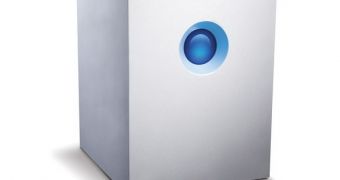For a company supposed to be in trouble with shortages, Seagate did remarkably well during the last quarter of 2011 and the first quarter of this year, 2012.
One would think that the alleged undersupply would give the HDD giant trouble meeting what orders it already has.
This does not seem to be the case, at least not any longer, according to a new official announcement.
Seagate has signed a deal with LaCie, through which it will completely acquire the latter and all its customers.
In other words, the former will have even more orders to fill, for external hard disk drive units, cases and network-attached storage devices.
Not exactly a responsibility an inventory troubled company should be able or eager to assume but, then again, those big profits have to go somewhere.
LeCie's shareholders will receive around $186 million in cash, or 147.87 million Euro.
Once the transaction is carried out, Philippe Spruch, LaCie’s chairman and chief executive, will join the new parent company and get, as immediate subordinates, LaCie's Deputy General Manager Pierre van der Elst and Seagate retail group Vice President and General Manager Patrick Connolly.
“Seagate has a strong commitment to the growing consumer storage market and bringing the most dynamic products to market. LaCie has built an exceptional consumer brand by delivering exciting and innovative high-end products for many years,” said Steve Luczo, Seagate chairman, president and chief executive officer.
“This transaction would bring a highly complementary set of capabilities to Seagate, significantly expand our consumer product offerings, add a premium-branded direct-attached storage line, strengthen our network-attached storage business line and enhance our capabilities in software development. We are also excited that Philippe, who is a true visionary and leader in the consumer storage business, would join Seagate to run our consumer storage products organization.”

 14 DAY TRIAL //
14 DAY TRIAL //